Rice (Oryza sativa) is an important crop cultivated on organic soils in the Everglades Agricultural Area and surrounding mineral soils in southern Florida. The crop is cultivated in over 25,000 acres in rotation with sugarcane (Saccharum spp. interspecific hybrids) during the sugarcane fallow renovation period. Rice is also cultivated following the sugarcane-sweet corn (Zea mays convar. saccharata var. rugosa) cropping sequence. Weed management is a major cost associated with rice production. Weed species including grasses, sedges, and broadleaves infest rice fields in Florida. However, grass weeds are the most predominant and problematic because of the rotational sequence of grass crops in the region’s cropping system.
Several grass weeds including sprangletop species (Leptochloa spp.) infest Florida rice. Sprangletop species are troublesome grass weeds in rice in the United States (Smith 1975; Smith 1983). They are commonly found in Florida and west into Texas, Arizona, California, and Oregon (Murphy et al. 2010). Amazon sprangletop (L. panicoides), a summer annual grass introduced from Brazil, and bearded sprangletop (L. fusca ssp. fascicularis), an annual grass native of North America (Bryson and DeFelice 2009), are the most common Leptochloa spp. in Florida rice. Both species are semiaquatic and occur in flooded rice or fallow fields and fields where floodwaters have receded, as well as in moist to wet cultivated fields, disturbed areas, and waste areas. Although these species are troublesome in rice, they are not as competitive with rice as Echinochloa spp. (such as barnyardgrass, E. crus-galli), red or weedy rice, and fall panicum (Panicum dichotomiflorum) (Driver et al. 2019). Sprangletop species typically have smaller leaves and stems compared to the more competitive weeds in rice (Bryson and DeFelice 2009). This article describes the biology and control options for sprangletop species associated with rice in Florida to assist growers in making correct identification and appropriate management decisions.
Biology and Life Cycle of Amazon Sprangletop
Amazon sprangletop is a tufted, erect annual grass weed that can grow up to 3 feet tall (Figure 1). Leaf blades of seedlings (Figure 2) are rough or smooth and have a membranous ligule. In mature plants, leaves are flat, smooth, and occasionally hairy on the margins. Leaf sheaths are rough or smooth and tightly compressed at the base, and the lowermost parts are keeled. Leaf blades are linear in shape, with a green midrib and an alternate arrangement. The ligule is long and membranous with a squared-off top. The stem is stiffly erect, branched, and rough. Roots are shallow and fibrous. The flower or seedhead is an erect, spreading, and branched panicle, 5 to 12 inches long (Figure 3). Propagation is by seed.
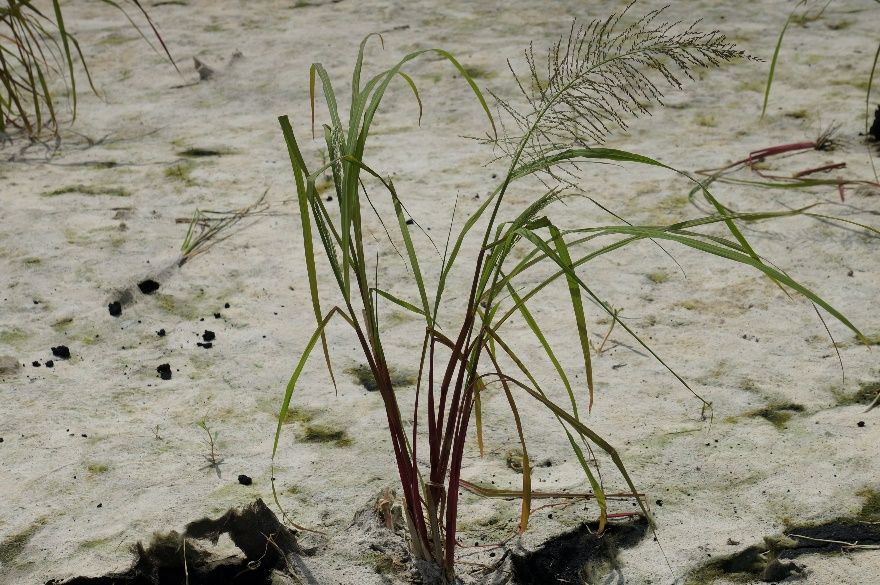
Credit: D. C. Odero, UF/IFAS

Credit: D. C. Odero, UF/IFAS
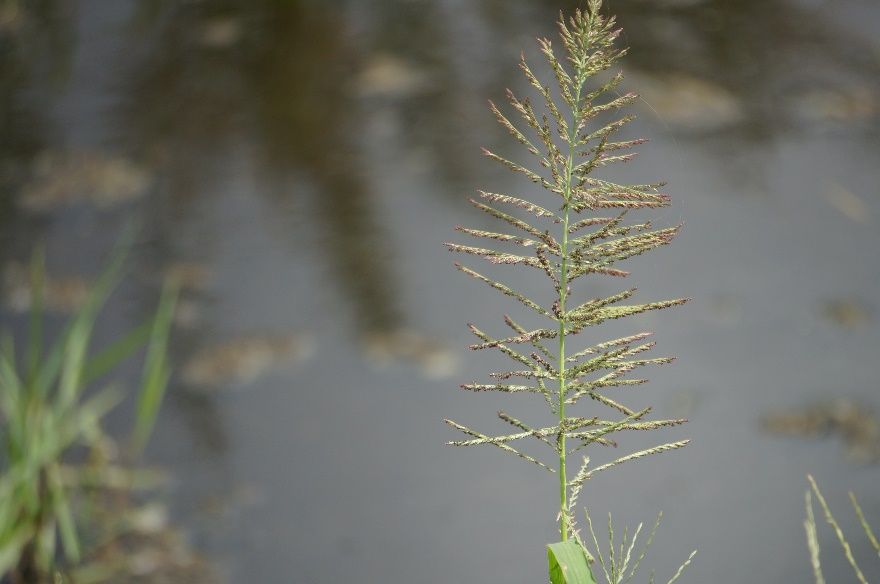
Credit: D. C. Odero, UF/IFAS
Biology and Life Cycle of Bearded Sprangletop
Bearded sprangletop is an aggressive, erect, spreading, and branching tufted grass weed (Figure 4). Seedling leaf blades are rough on both sides, rolled, and have a membranous ligule (Figure 5). Leaves of mature plants are long, narrow, widest in the middle, and slightly hairy. The leaves are rough on both sides and tightly rolled when dry. The ligule is membranous and becomes jagged with age. Stems are erect, spreading, and branching, reaching up to 3 feet tall (Figure 4). Roots are shallow and fibrous. The flower or seedhead is an open panicle 3 to 10 inches long with 6 to 36 stiff, erect branches (Figure 6). The spikelets have 6 to 12 florets. The spikelets are in two rows on one side of the flower stalks. Propagation is by seed.
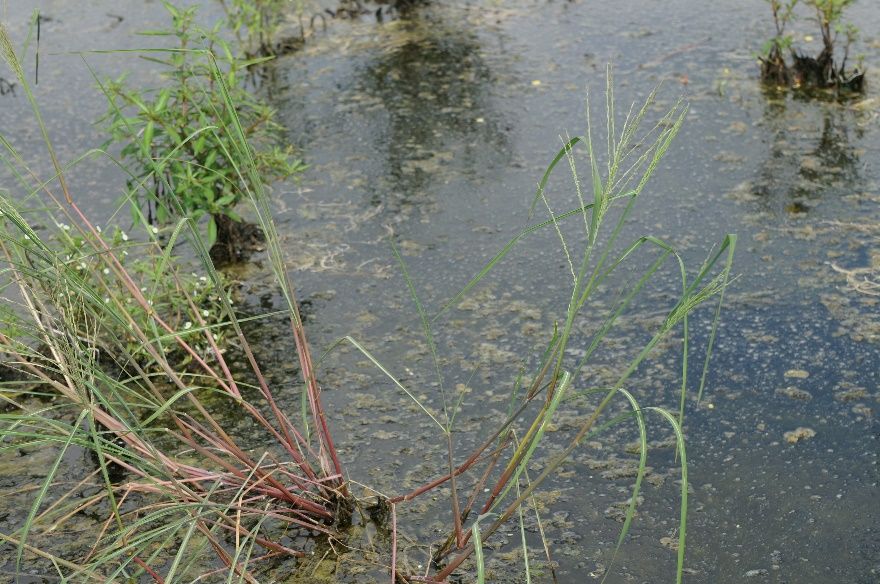
Credit: D. C. Odero, UF/IFAS
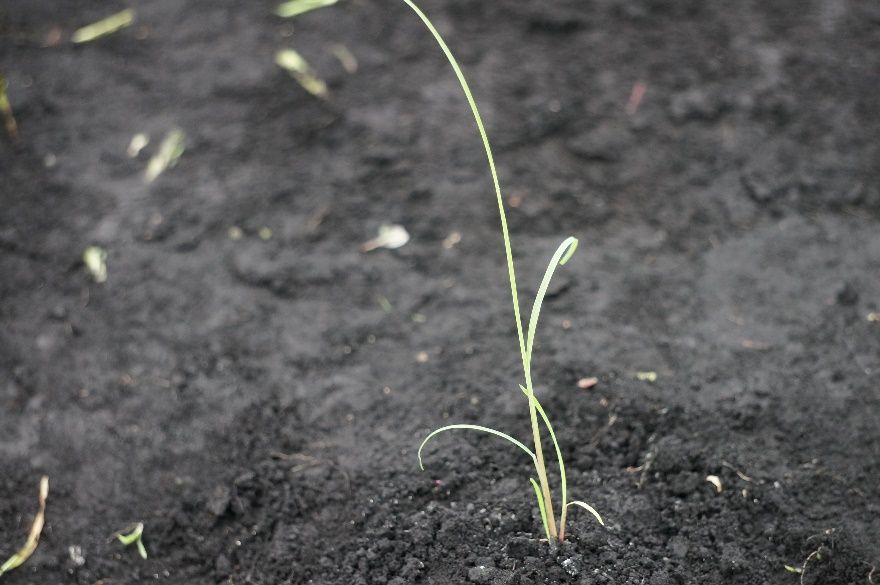
Credit: D. C. Odero, UF/IFAS
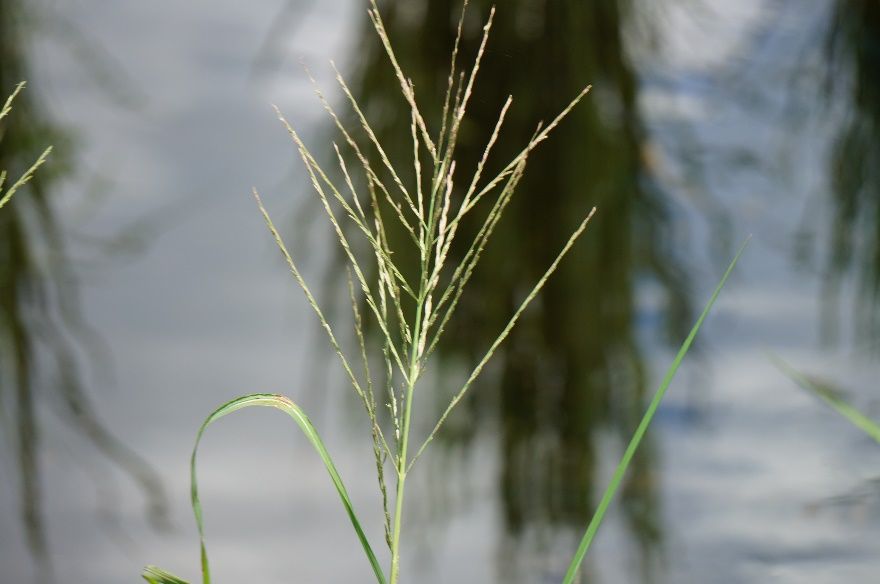
Credit: D. C. Odero, UF/IFAS
Control of Sprangletop Species in Rice
Cultural practices such as crop rotation, tillage, field sanitation, water management, and time of planting can be used to reduce sprangletop infestations in rice. Cultivation immediately before planting will destroy sprangletop species present in the field and minimize early-season competition with rice. Timing of initiation of permanent flood is important in mitigating effects of sprangletop species in rice. Applying permanent flood will depend on the growth stage of rice to minimize injury.
Herbicides (Table 1) are usually more effective than cultural practices in controlling weeds in rice. However, herbicides will be highly effective only when integrated with cultural practices. The goal of using herbicides is to kill or stunt sprangletop species while giving rice a competitive differential height advantage. Preemergence herbicides are not commonly used in the Florida rice production system (Odero and VanWeelden 2018). Few herbicides are used for postemergence control of sprangletop species in rice. Sprangletop species are usually hard to kill with a single application of propanil, a postemergence herbicide widely used in rice for broad-spectrum weed control (Smith 1975; Smith 1983). Sequential application of propanil or tank-mixes with thiobencarb can provide acceptable control. Caution should be taken to minimize rice injury from propanil, particularly at very high temperatures. Cyhalofop controls a wide spectrum of annual grass weeds including sprangletop species. It can be applied from 1-leaf rice to 60 days before harvest with no injury on rice. Herbicide users must read the label and follow all instructions and precautions carefully.
Table 1. Sprangletop species control in sugarcane and rice. Contact: Extension weed specialist (dcodero@ufl.edu). This table lists registered pesticides that should be integrated with other pest management methods. Contact your local UF/IFAS Extension office for additional information (https://ifas.ufl.edu/, IFAS Directory).
References
Bryson, C. T, and M. S. DeFelice (Eds). 2009. Weeds of the South. Athens, GA: University of Georgia Press.
Driver, K. E., K. Al-Khatib, and A. Godar. 2020. “Bearded Sprangletop (Diplachne fusca ssp. fascicularis) Flooding Tolerance in California Rice.” Weed Technology 34:193–196.
Murphy, T. R., D. L. Colvin, R. Dickens, J. W. Everest, D. Hall, and L. B. McCarty. 2010. Weeds of Southern Turfgrasses. Special Bulletin 31. Athens, GA: University of Georgia Extension Publications.
Odero, D. C., and M. VanWeelden. 2018. Weed Management in Rice. SS-AGR-10. Gainesville: University of Florida Institute of Food and Agricultural Sciences. https://edis.ifas.ufl.edu/wg001
Smith, R. J., Jr. 1983. “Competition of Bearded Sprangletop (Leptochloa fascicularis) with Rice (Oryza sativa)”. Weed Science 31:120–123.
Smith, R. J., Jr. 1975. “Herbicides for Control of Leptochloa panicoides in Water-Seeded Rice.” Weed Science 23:36–39.